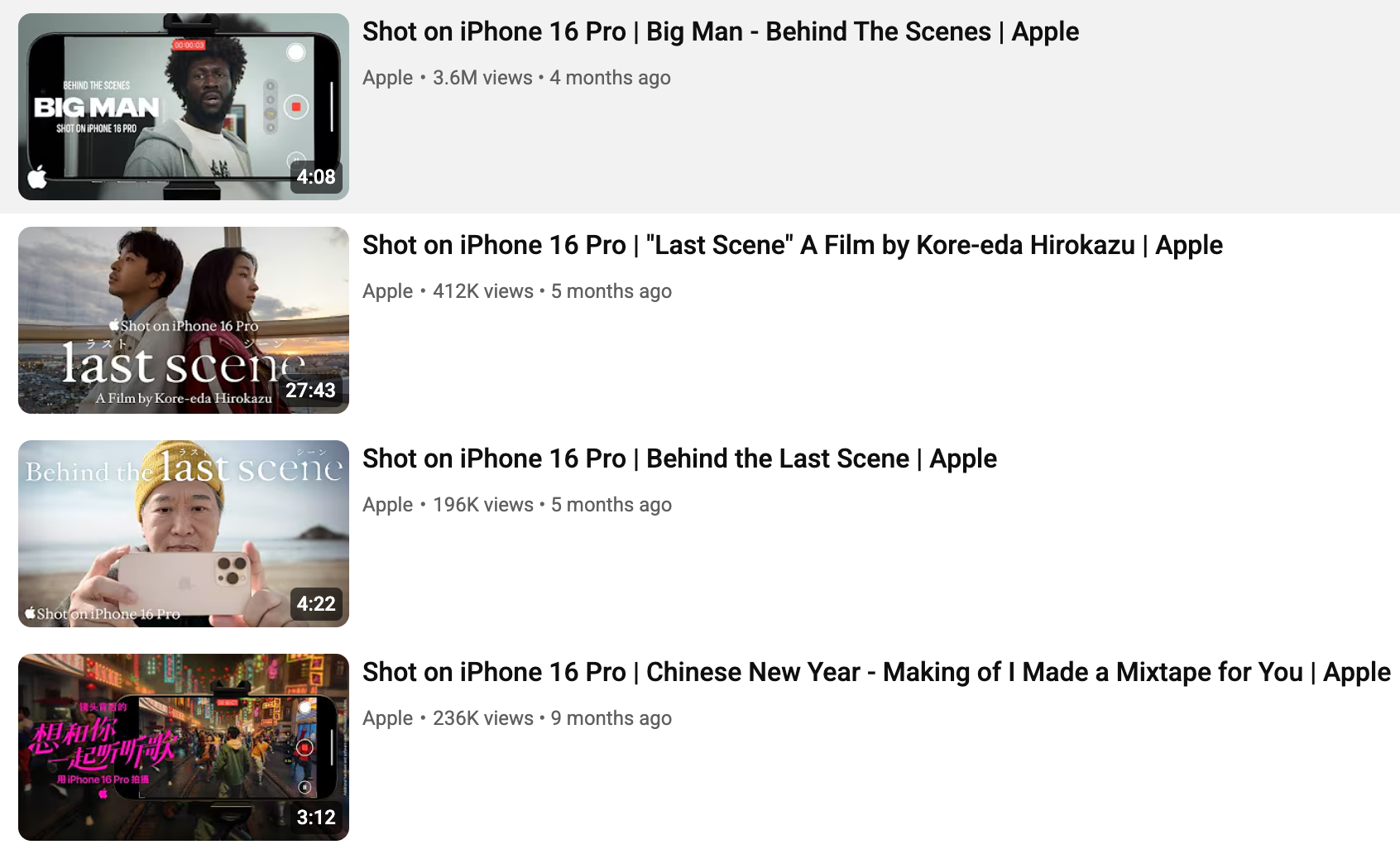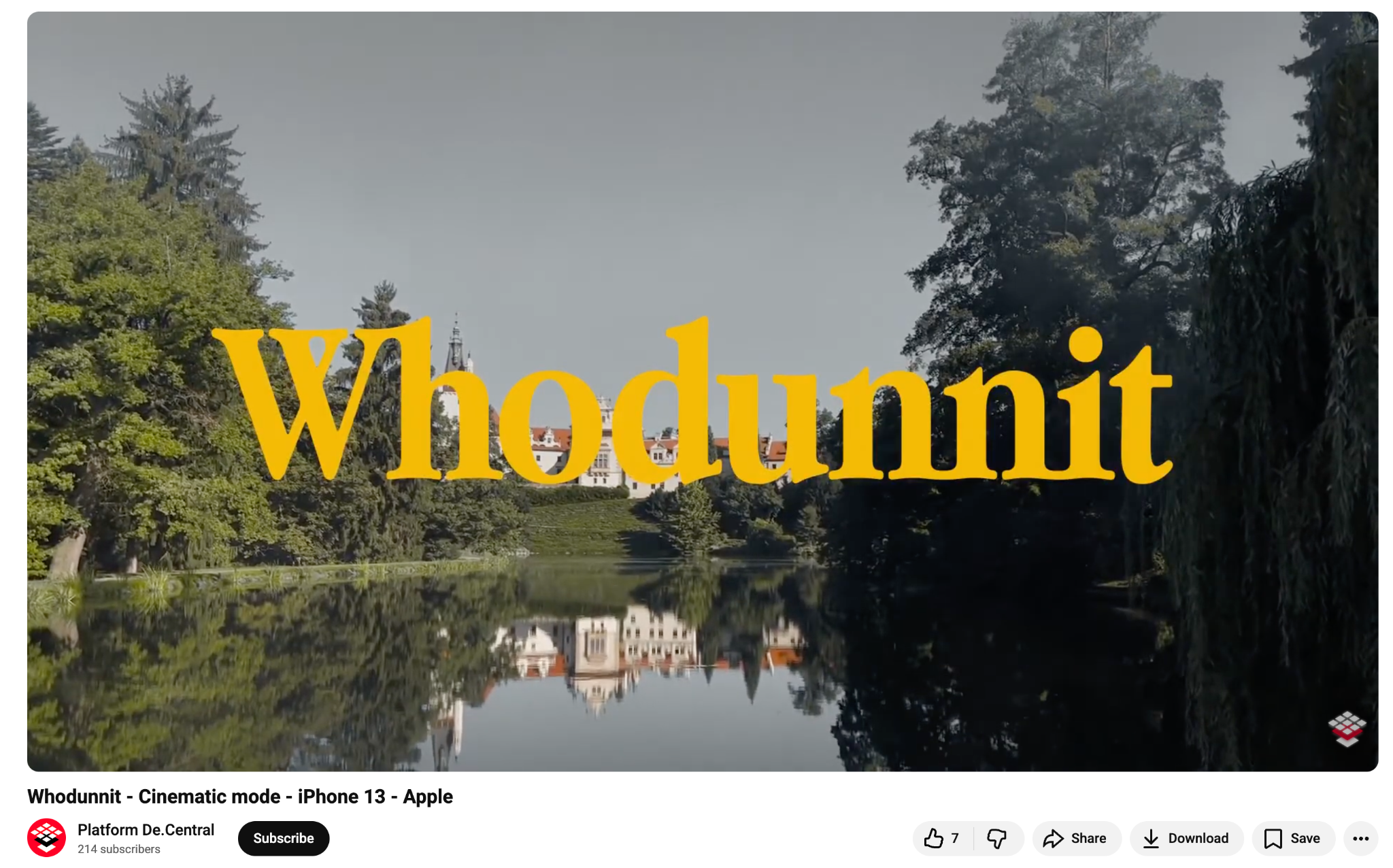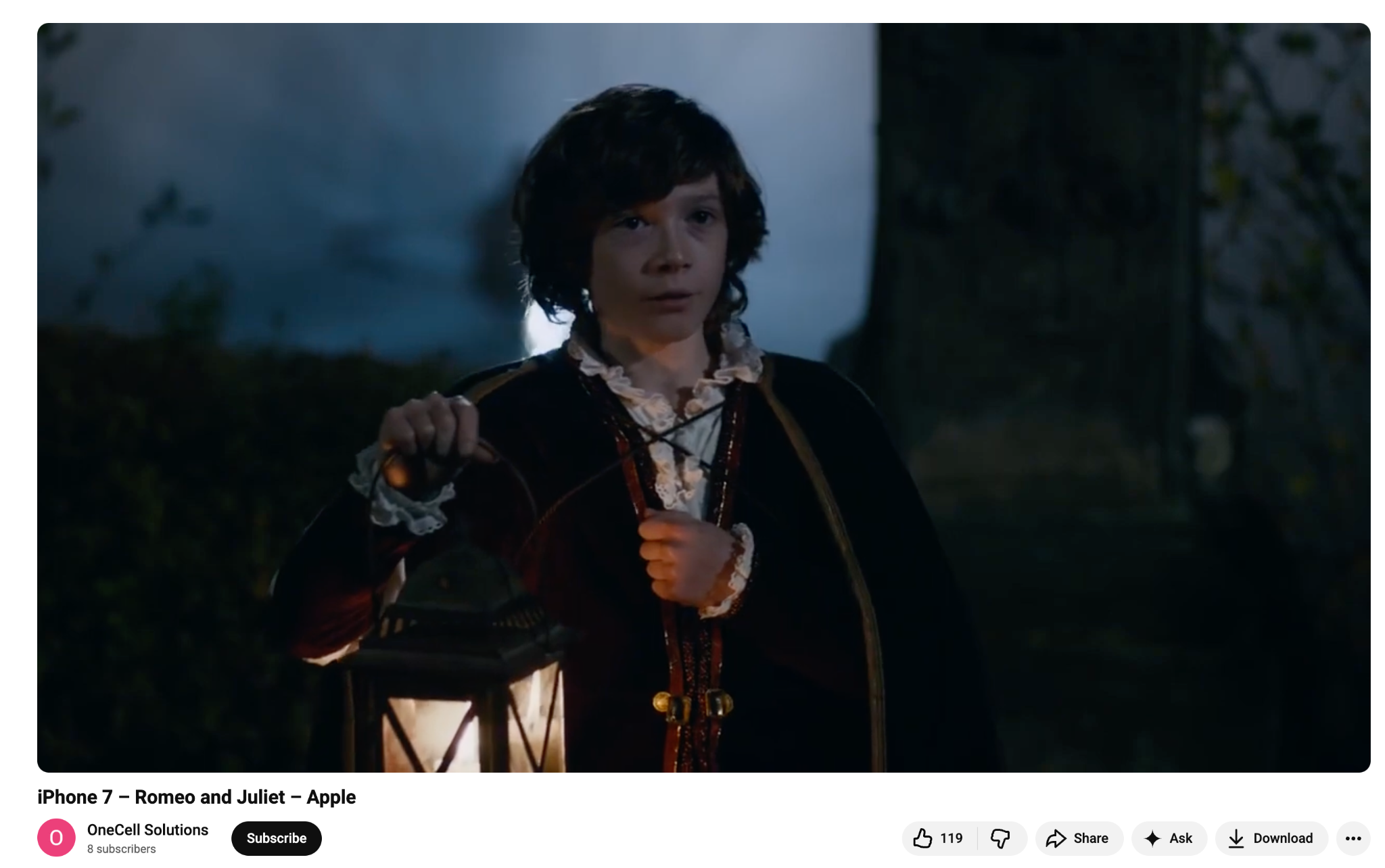Even with all the emerging AI and technology headlines dominating the market, Apple’s been named “The World’s Most Valuable Brand” by Kantar Brandz. And it’s not the first time — in fact, it’s the fourth time they’ve had a consecutive win.
That doesn’t happen by chance. Apple is uniquely good at turning advertising into cultural memory. That’s because Apple ad campaigns aren’t just selling hardware, they’re selling a way of living, a specific identity.
In this guide, we examine what makes the Apple brand so recognizable and unique, and tease out the lessons for fintech marketers hoping to boost their visibility.
What Defines an Apple Ad Campaign?
Apple campaigns reflect a distinct philosophy: emotion before explanation. In other words, Apple shows what its technology helps people achieve rather than what its devices can do. As a result, you’ll notice Apple ad campaigns lean on 3 foundational strategies:
1. Simplicity-Driven Messaging
There’s very little text. Most of the ad is communicated visually in a super clean aesthetic. Usually, the ad only focuses on one central idea or theme to catch and keep a person’s attention.
Example: The “Shot on iPhone” campaign (2015-present) conveys creative empowerment without mentioning technical specifications, generating over 70 million social media interactions and 100,000+ photo submissions.

Though the campaign was expensive and long-running, it was worth it. As James Hurman points out in a June 2025 issue of EFF BOMB:
“Apple increased their global market share of smartphones by 5 percentage points. If that doesn’t sound like much, remember that in 2024, the total global value sales of smartphones was $800B. 5% of that is $40B. They made an extra $40B in 2024 alone. And plenty more in the 9 years prior.”
In 2025, “Shot on iPhone” won the Grand Prix for Creative Effectiveness and Cannes Film Festival.
2. Emotional Storytelling Over Product Features
Campaigns showcase human moments — creativity and connection — rather than Apple products’ capabilities. It frames the user as a hero and the product as fuel to achieve their dreams.
Example: “Whodunnit” (2021) was an entertaining murder mystery filmed entirely on an iPhone 13, showcasing the Apple iPhone’s capability through dramatic storytelling.

3. Counter-Positioning Against Competitors
Apple’s founding “Think Different” mentality is still deeply embedded in the company’s DNA. And it often comes out in subtle (sometimes even direct) competitive differentiation.
Example: Apple's measured approach to AI positioning in 2024, prioritizing trust over rushing features to market, patience that contributed to 20% stock increase.
As Greg Silverman, global director of brand economics at Interbrand pointed out in Marketing Dive: “While others rushed into AI, Apple has taken a more deliberate path to ensure its AI releases matched its values,” said Silverman in release details. “This slower-moving act of leadership has put long-term trust ahead of short-term revenue gains. Following these brand moves, Apple’s stock moved up 20% YTD.”
As financial services become increasingly commoditized (similar rates, features, and digital experiences) emotional differentiation is even more critical.
The 3 tenets of Apple’s ad campaigns give us a playbook for building preference beyond functional attributes, a lesson particularly valuable for digital banks, payment platforms, and loyalty programs competing in crowded markets.
How Apple’s Campaigns Promote Customer Engagement & Brand Loyalty Impact
Apple’s omnichannel marketing strategies are exceptionally good at driving loyalty. iPhone users have a 92% retention rate, versus Samsung’s 77%. Here’s why:
- Premium positioning. Apple has the highest average selling price in the smartphone category, but still manages to capture 17.7% global market share (as of Q1 2023). A lot of it is how they frame users in their ads: cool, confident, getting things done — people who want to buy a premium product.
- Organic advocacy. Everyone seems to love Apple products. People actively tune in to Apple Events so they can hear about the latest releases and tout their devices on social media.
- Cross-product ecosystem. Once you have an iPhone, you probably will consider an iPad, AirPods, an Apple Watch, or a Mac (or all of the above). That’s because all of the products naturally feed into one another, making for a seamless tech experience. In fact, more than half of Apple users own multiple Apple devices.
Digital banks and fintech platforms can apply this by positioning products as enablers of financial wellness, independence, or achievement, not just as tools with competitive APYs or cashback rates.
3 Reasons Why Apple’s Ad Campaigns Work
1. Narrative-First Creative Development
Apple tends to work with world-class directors and filmmakers to ensure every campaign begins with human insight, not a product brief.
- The Whodunnit ad, for instance, enlisted French director J.B. Braud to recreate the Knives Out kind of environment for a murder mystery.
- For an ad called “Start Up” (2022), Apple worked with music producer A.G. Cook created an original composition entirely from Apple product sounds spanning 45 years.
Employing creative minds has been a huge boon for Apple, making their campaigns memorable years after airing, extending marketing value beyond initial spend.
2. Simplicity in Execution
Each campaign communicates one clear idea.
Apple’s “911” ad (2022) focused solely on the Apple Watch, framing it as the way three separate people received help in emergency situations.

It’s a short ad with limited imagery (a wet road, the ocean, and a farm), but it really hits home for anyone who’s been in a scary situation.
3. Strategic Brand Positioning
Each campaign reinforces Apple’s distinct market position. The target audience sees themselves as resourceful, creative, innovative, clear, and independent thinkers who are smart enough to buy Apple’s premium products. According to Statista, Apple maintains the highest average selling price while capturing over 80% of smartphone industry profits.
How Apple Develops New Ad Campaigns: A Framework
Model 1: The Narrative Arc Campaign
These are examples of extended storytelling across 60-90 second spots that prioritize emotional journey over product demonstration.
They’ve got cinematic production, minimal dialogue, an emotional soundtrack or authentic audio. But they also reveal product utility in the final moments of the ad. A great one was “Romeo and Juliet” (2016).

- Recent Applications: "Romeo and Juliet" (2016), "Whodunnit" (2021), "911" (2022)
- Technical approach:
- Metrics focus: Brand sentiment, emotional engagement, shareability, safety feature awareness
How to adapt for fintech: Showcase customer financial journeys (first home purchase, starting business, achieving independence) with your financial product as the enabler.
Model 2: The Demo-as-Entertainment Campaign
Product capabilities are shown through engaging, often humorous scenarios that don’t feel at all like feature lists. Apple often incorporates celebrity partnerships to add a bit more oomph.
“The Rock x Siri Dominate the Day” (2017) is a good example, showing off Siri’s improved capabilities through Dwayne The Rock Johnson’s chaotic day.

How to adapt for fintech: Demonstrate payment speed, security features, or rewards earning through engaging celebrity or influencer scenarios.
Model 3: The User-Generated Content Campaign
We’ve already talked about “Shot on iPhone” several times, but for how long-standing the campaign was (10 years), it’s worth mentioning again. Part of why it was so successful is that it was almost entirely user-generated, transforming the everyday user into a brand ambassador.
How to adapt for fintech: Ask customers to share their real financial success stories, and reward them for genuine user testimonials by featuring them in an ad campaign.
Actionable Strategies for Fintech Marketers
Phase 1: Nail Your Brand Identity
Building an Apple-caliber campaign starts with clarity of purpose, not production spend. For a fintech brand, some ad themes might be:
- Confident
- Capable
- Financially free
Defining that emotional position first keeps every creative decision anchored to something deeper than product attributes.
Beyond that, you’ll need to set specific KPIs to determine whether that brand identity is resonating with your audience. Track things like:
- Conversion rates
- CAC
- NPS
- Brand recall
- Customer lifetime value
Phase 2: Campaign Development
Start with customer insight. Conduct qualitative research identifying emotional motivations beyond rational product selection.
Then, start developing some campaigns. Resist the temptation to communicate multiple features in one ad. Remember, Apple’s ad campaigns focus on the emotional storyline first, then tie that to one feature, and one feature only.
Try pre-testing some campaigns with customers you trust to gauge their emotional response. Are they reacting the way you thought they would? If not, it might be time to go back to the drawing board.
Phase 3: Optimization & Scale
Apple’s marketing success isn’t magic, it’s methodical.
The brand's decades-long continuity comes from strong institutional memory: a shared understanding of what tone, design, and storytelling styles work. Creating a campaign archive or brand playbook serves the same function for emerging brands, ensuring that each new iteration strengthens the last.
Successful campaigns spawn social extensions, retail experiences, and product packaging integration. Maintain a campaign performance database to draw inspiration from, knowing that they work (aka drive specific business outcomes).
The Opportunity: Rewards Ads & Commerce Media
If Apple taught marketers anything, it’s that advertising works best when it creates emotion and action. For fintechs and financial institutions, rewards-based advertising has a similar convergence — the emotional drive to get a good deal tied directly to measurable spend.
And consumers are already signaling the demand. An IPSOS survey found that 70% of Americans prefer paying with credit or debit cards that earn rewards, and 65% open new cards primarily for those incentives. Rewards aren’t a side benefit, they’re a decision driver.
Platforms like Kard help banks, fintechs, and brands reach consumers at the moment of transaction, turning every purchase into a measurable marketing channel. At Kard, we’re seeing our retail customers reap the benefits:
- A global electronics brand drove a 166% increase in AOV
- A popular footwear brand won 35%+ more market share
- A major clothing retailer drove 167% WoW revenue growth
These changes happen quickly. Most of our customers see results in a quarter or less. And according to Runa, a global payments platform, 60% of merchants plan to increase their reliance on rewards programs in the next 12 months, so you might as well get in on it now, before your competitors do.
Turn Emotional Connection Into Real Growth
Differentiation (and the revenue that comes from it) requires emotional connection. Modern marketing platforms make measuring that return on investment possible, tracking both brand and performance across channels.
Ready to elevate your fintech marketing with data-driven strategies that drive emotional engagement and repeat purchase behavior?
Explore how modern performance marketing platforms like Kard can measure both brand impact and conversion outcomes across your customer journey. Book a demo to see how the first independent commerce media network can level up your paid marketing strategy.
FAQs
What makes Apple ad campaigns more effective than competitors?
Apple campaigns prioritize emotional storytelling over feature lists, creating memorable narratives that build long-term brand equity. Instead of highlighting technical specifications, Apple shows how products enhance human experiences: creativity, connection, achievement. And every campaign reinforces that identity — with the utility of its products as the side story. Despite competitors offering similar technical capabilities, Apple captured over 80% of smartphone industry profits in Q1 2023 using this emotional appeal.
Can small fintech companies apply Apple's advertising strategies with limited budgets?
Absolutely. While Apple's production budgets are substantial, their core principles (emotional storytelling, single-message focus, and customer-centric narratives) work at any budget level. The “Shot on iPhone” campaign in particular demonstrates that user-generated content can be extremely effective: Apple increased their global market share of smartphones by 5 percentage points.
Fintech brands can take the same approach by featuring real customers reaching financial milestones — saving for a first home, paying off debt, or starting a business — rather than scripted testimonials. Emotional credibility, not production polish, is what drives engagement and trust.
How do you measure ROI on emotional brand campaigns like Apple’s?
Emotional marketing pays off when it’s measured through both performance and perception. Apple’s team monitors immediate outcomes (sales velocity, web traffic, conversions) and long-term health indicators such as Net Promoter Score and customer lifetime value.
Fintech marketers can replicate that framework by tying campaign exposure to downstream actions, like new account openings, average deposit size, and repeat product usage, while tracking reputation metrics like brand recall and trust. The goal isn’t to separate emotion from performance but to see how each reinforces the other, building compounding value over time.


